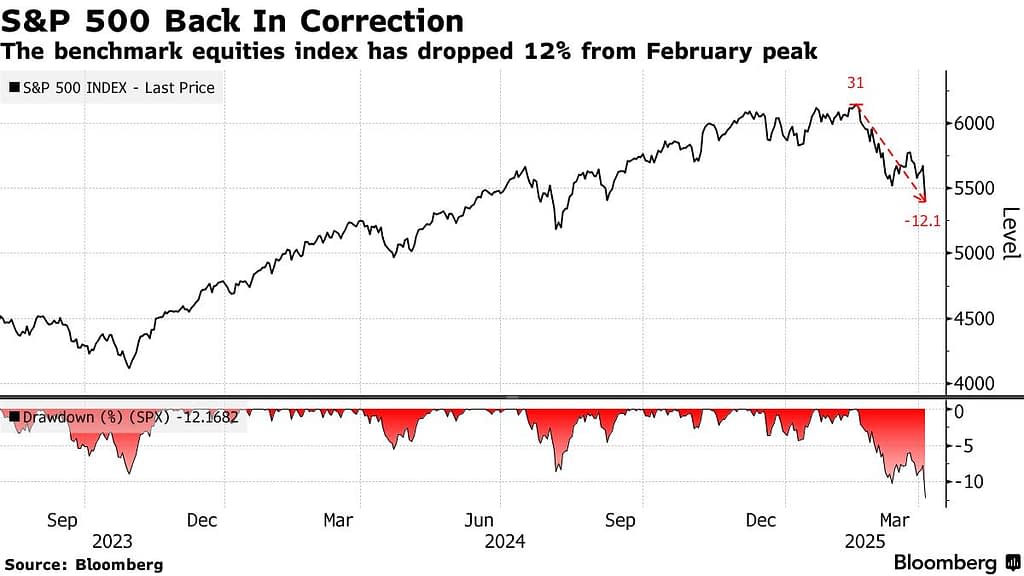US President Donald Trump doubled tariffs on Indian goods to 50% after adding a 25% penalty for Russian oil purchases to the previously planned 25% rate. The measures will take effect within 21 days of the announcement. What does this mean for the world’s second-most populous nation, where one-fifth of exports head to the US? Trump’s decisions will impact Indian exports worth $86.51 billion and may reduce India’s economic growth from 7% to 6% annually, according to Capital Economics analysts.
India Faces 0.6% GDP Drop Due to New Tariffs
India sends nearly one-fifth of its total exports to the US, making America its largest trading partner. Of India’s total exports worth $434 billion for the year ending March 2025, $86.51 billion went to the US. For market observers, it’s significant that Indian exports to the US represent 2% of India’s GDP.
Shilan Shah from Capital Economics warns that the additional 25% tariff is “large enough to have a material impact.” Analysts predict a 0.6 percentage point drop in Indian GDP, which would slow economic growth from the current 7% to approximately 6% annually. This slowdown will vary in intensity across sectors, with some industries facing existential challenges.
Engineering Loses Competitiveness with $19 Billion at Stake
The most substantial impact will hit engineering – the sector with the highest absolute export numbers to the US. From its total exports worth $117 billion annually, it ships $19.16 billion to America, representing 16% of the sector’s production.
For market participants, it’s crucial that engineering exports already face uneven conditions:
- Steel products carry 50% sectoral tariffs and comprise 17.07% of engineering exports
- Non-ferrous metals represent 10.52% of exports
- Industrial machinery forms another significant segment
The combination of existing sectoral tariffs with new 50% duties creates double burden. Shilan Shah notes that “India’s attractiveness as an emerging manufacturing hub will be undermined,” affecting foreign investment flows. While engineering faces structural problems, consumer sectors primarily address employment concerns.
Textiles and Jewelry Will Lose Third of American Market
Two key consumer-focused sectors face proportionally the largest losses. Jewelry contributes 7% to Indian GDP, employs 5 million workers, and exports one-third of its production (33%) to the US. Similarly, the textile industry directs 34% of exports to the American market and employs 45 million workers.
Rajesh Mehta from Rajesh Exports called higher tariffs an “additional burden” and urged government support. For market watchers, it’s important that these sectors will be forced to seek alternative markets or reduce margins. The Indian textile industry confederation highlighted the loss of “tariff advantages over other countries.”
This competitive disadvantage contrasts with successes in technology sectors, where India built a strong position against China.
India Overtook China in Smartphones, Now Faces 50% Tariffs
The technology sector presents the most complex situation for market participants. Electronics shows the highest US dependency with 38% of exports heading to the American market. However, India recently surpassed China as the largest smartphone exporter to America, primarily due to iPhone production shifts.
March electronics exports doubled to $2.76 billion, showing dynamic growth. Alexandra Hermann from Oxford Economics considers the sector “most exposed” to risks, but Trump provided strategic relief – exempting smartphones, computers, and electronics from tariffs.
Apple will avoid new tariffs thanks to US investment commitments, including an announced $100 billion investment in American research and production. For market observers, this signals that companies with American investments can secure exemptions, creating a new survival strategy in trade conflicts. A similar path – US investments in exchange for tariff relief – may become key for other Indian firms.
Trump Threatens Pharmaceuticals with Progressive Tariffs Up to 250%
Although the pharmaceutical industry is currently exempt from tariffs, Trump threatened gradual rate increases. In a CNBC interview, he outlined plans to start with “small tariffs” and gradually raise them to 250% over several years.
The sector exports medicines worth $10.5 billion annually to the US, representing 35% of total pharmaceutical exports. The gradual model gives firms time to adapt – either relocate production to the US or find new markets. However, the timeframe of several years creates investment uncertainty for the entire industry.
This uncertainty reflects broader geopolitical reality affecting India’s position in global markets. Simultaneously, Trump today announced 100% tariffs on semiconductors produced abroad unless companies commit to US construction – part of national security policy under Article 232.
Trump’s Trade Policy Punishes India for Russian Oil
Trump imposed additional 25% tariffs due to Indian purchases of Russian oil as part of indirect pressure on Moscow. This decision shows how geopolitical choices translate directly into trade costs – India now pays double the price for its energy decisions.
Michael Wan from MUFG Bank highlights a key asymmetry: “The US can more easily find alternative supply sources, but it’s harder for India to diversify away from the US across various sectors.” For market participants, this means structural disadvantage in future negotiations.
The price of this disadvantage is visible when comparing with competitors that made deals with Trump:
- Vietnam: tariffs reduced to 20% from original 46%
- Thailand: drop to 19% from 36%
- Bangladesh: reduction to 20% from 35%
India now competes with these countries under significantly worse tariff conditions. In textiles, it faces competition from Bangladesh and Vietnam; in electronics, it competes with Vietnam and Mexico; in pharmaceuticals, with Europe. Approximately 32% of Indian exports remain exempt from tariffs, but even this protection isn’t permanent.
The combination of high tariffs and geopolitical pressure forces India to reconsider its foreign policy. Modi’s expected visit to China after seven years may signal an attempt to reduce US dependence and diversify trade relationships. For market observers following Indian companies, Trump’s policy represents another layer of uncertainty – export firm success will increasingly depend on the ability to find alternative markets to the American one.




